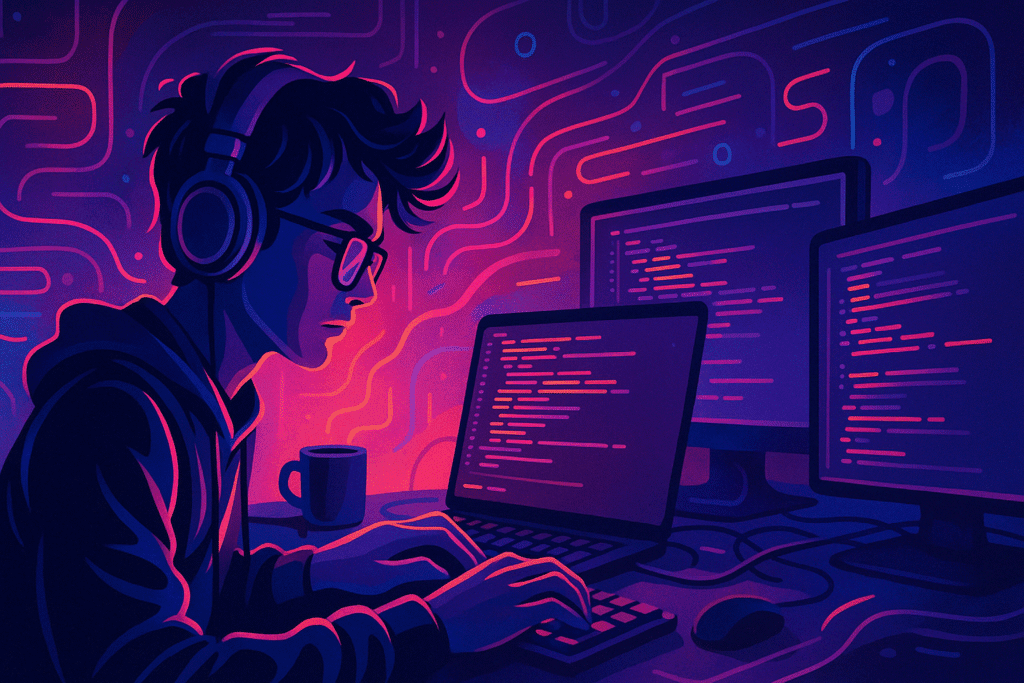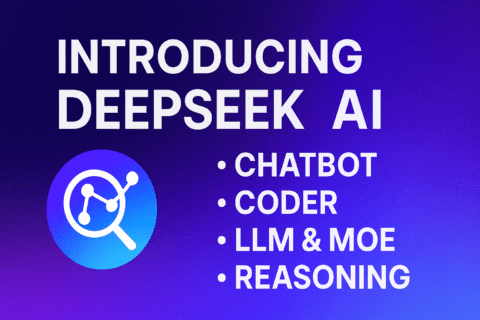What Is Vibe Coding?
A New Era of Software Development
Vibe Coding is not just a buzzword—it’s a breakthrough. It represents a paradigm shift in software development, where natural language transforms into functional code using advanced AI models. This shift empowers developers to focus on ideas, problem-solving, and user experience instead of getting bogged down in syntax and structure.
Imagine this: instead of writing lines of code, you simply say or type, “Build me a login page with email and password fields, styled like Instagram.” In seconds, AI turns that into production-ready code.
That’s the power of Vibe Coding.
🔑 Key Benefits of Vibe Coding
🚀 Accelerated Development
Eliminate hours of writing boilerplate code and repetitive tasks. Turn features around faster.
🧠 Lower Entry Barrier
Make coding accessible to non-programmers and cross-functional teams—designers, PMs, and founders can now co-create software.
🎯 Increased Focus on Logic
Developers can focus on what needs to be built, not the tedious how.
✨ Consistent Code Style
Automatically generate code that follows best practices and standard conventions.
🔄 Natural Debugging
Debugging is no longer manual—just refine your natural language input and regenerate.
💼 Tech Giants Are All In
70% of Fortune 500 tech companies are exploring Vibe Coding
3x faster feature development reported by early adopters
45% reduction in development costs on average
From Microsoft and Google to Amazon, the biggest names are integrating natural language coding into their IDEs, APIs, and cloud environments. Why? Because the ROI is undeniable.
💬 Industry Insights
“Vibe Coding has cut our development time in half. Our teams are shipping features faster than ever before.”
— Sarah Johnson, TechVibe Inc.
“Natural language programming is the future. Vibe Coding is leading the charge.”
— Michael Chen, Quantum Solutions
“We’ve seen a 40% increase in developer productivity since adopting Vibe Coding.”
— Priya Sharma, Future Systems
🧑💻 Developer Testimonials
“I was skeptical at first, but Vibe Coding has completely transformed my workflow. I spend more time solving interesting problems and less time writing boilerplate.”
— Alex Rodriguez, Senior Developer
“The regenerative debugging model has saved me countless hours. I just rephrase prompts instead of wading through stacks of error messages.”
— Jamie Williams, Full Stack Engineer
“As someone who thinks visually, being able to describe UI in natural language and watch it come to life is magical.“
— Taylor Kim, Frontend Developer
🚀 The Future Is Already Here
Vibe Coding is revolutionizing how we write code—and what it means to be a developer.
In this new era:
Creativity trumps syntax
Collaboration is more inclusive
Software is built at the speed of thought
As AI advances, the boundaries between idea and implementation will continue to blur. Those who embrace Vibe Coding early will gain a massive competitive edge in speed, innovation, and delivery.
❓ Most Asked Questions About Vibe Coding
1. What is Vibe Coding?
Vibe Coding is a software development approach where AI turns natural language descriptions into functional code.
2. How does Vibe Coding work?
It uses large language models trained on code and technical documents to understand user intent and generate appropriate code.
3. Do I need to know how to code to use Vibe Coding?
Not necessarily. While having coding knowledge helps with refinement, beginners can create basic applications using plain language.
4. Which tools support Vibe Coding?
Platforms like GitHub Copilot, OpenAI Codex, Amazon CodeWhisperer, and DeepSeek R2 support Vibe Coding features.
5. What programming languages does it support?
Most models support Python, JavaScript, TypeScript, HTML/CSS, Java, Go, and others.
6. Can it handle backend and frontend code?
Yes. Vibe Coding can generate full-stack applications, from REST APIs to responsive UIs.
7. Is the generated code production-ready?
It can be. However, developers should always review and test AI-generated code before shipping.
8. What about security?
Vibe Coding tools are improving in identifying insecure code patterns, but developers must still follow secure coding practices.
9. Can it build mobile apps?
Yes—prompt-based systems like FlutterFlow or integrations with SwiftUI can be used for app development.
10. How accurate is Vibe Coding?
Accuracy depends on prompt clarity. Well-structured prompts yield better results.
11. Does it replace developers?
No. It augments developer productivity by automating repetitive tasks and accelerating prototyping.
12. Can Vibe Coding debug code?
Yes. It can detect errors and suggest corrections, especially when given clear error descriptions.
13. What industries are adopting it fastest?
Tech, finance, healthcare, and education are among the early adopters of Vibe Coding technologies.
14. How is it different from GitHub Copilot?
Copilot is a form of Vibe Coding. The concept extends beyond to full applications, integrations, and design systems.
15. Can it generate tests?
Yes. Vibe Coding tools can generate unit, integration, and UI tests from prompts.
16. What are the limitations?
Sometimes the code lacks edge-case handling, optimization, or precise integration with existing frameworks.
17. How do I write a good prompt?
Be specific. Include goals, desired outcomes, and context. Avoid vague phrases.
18. Is there a visual interface?
Some tools offer drag-and-drop or voice-to-code interfaces to complement the text-based input.
19. How much does it cost?
Costs vary by provider. Some tools are free; others require cloud credits or subscription plans.
20. What’s the future of Vibe Coding?
AI will get better at collaborative pair programming, understanding real-time team workflows, and integrating directly with live production environments.



